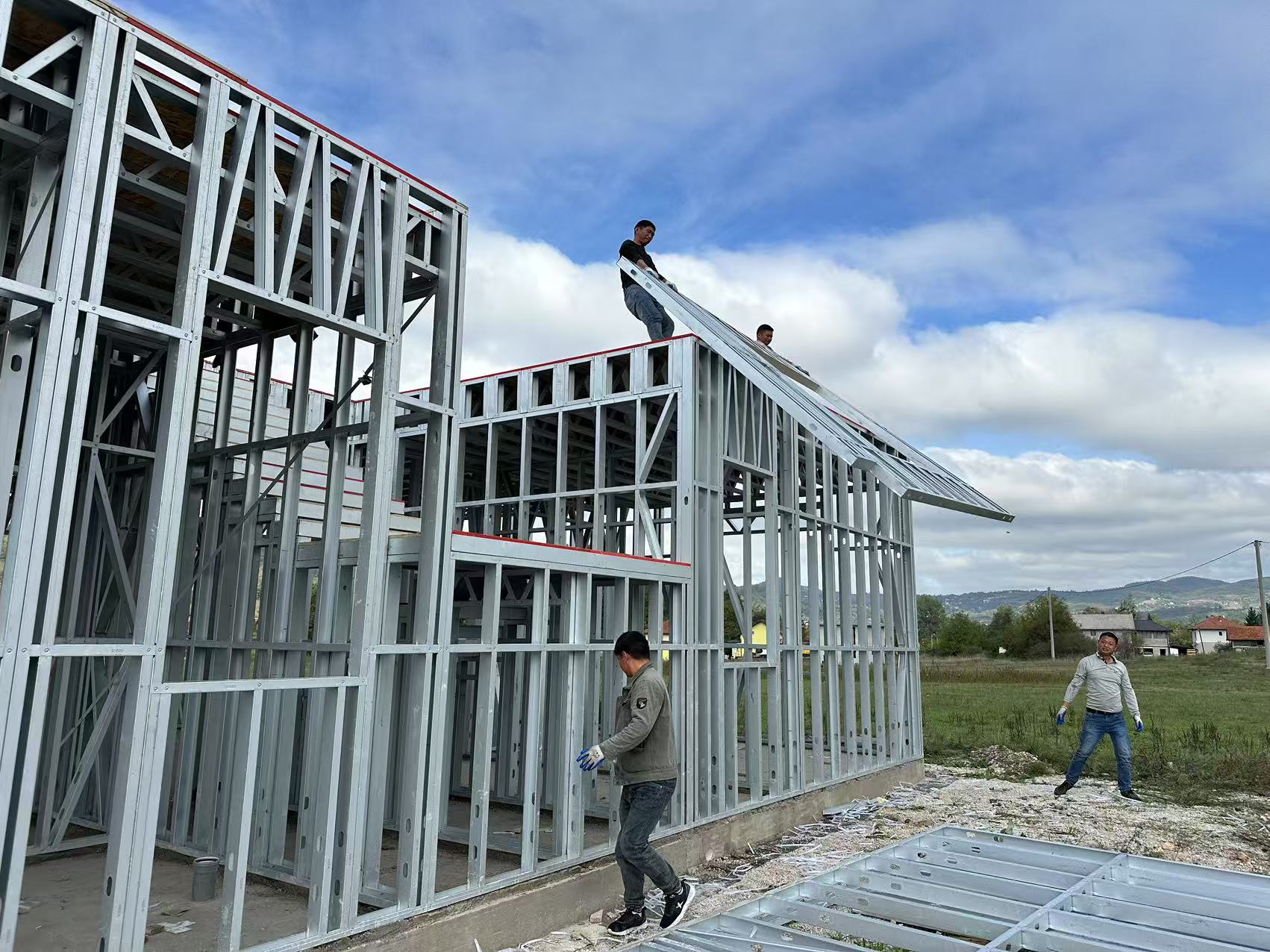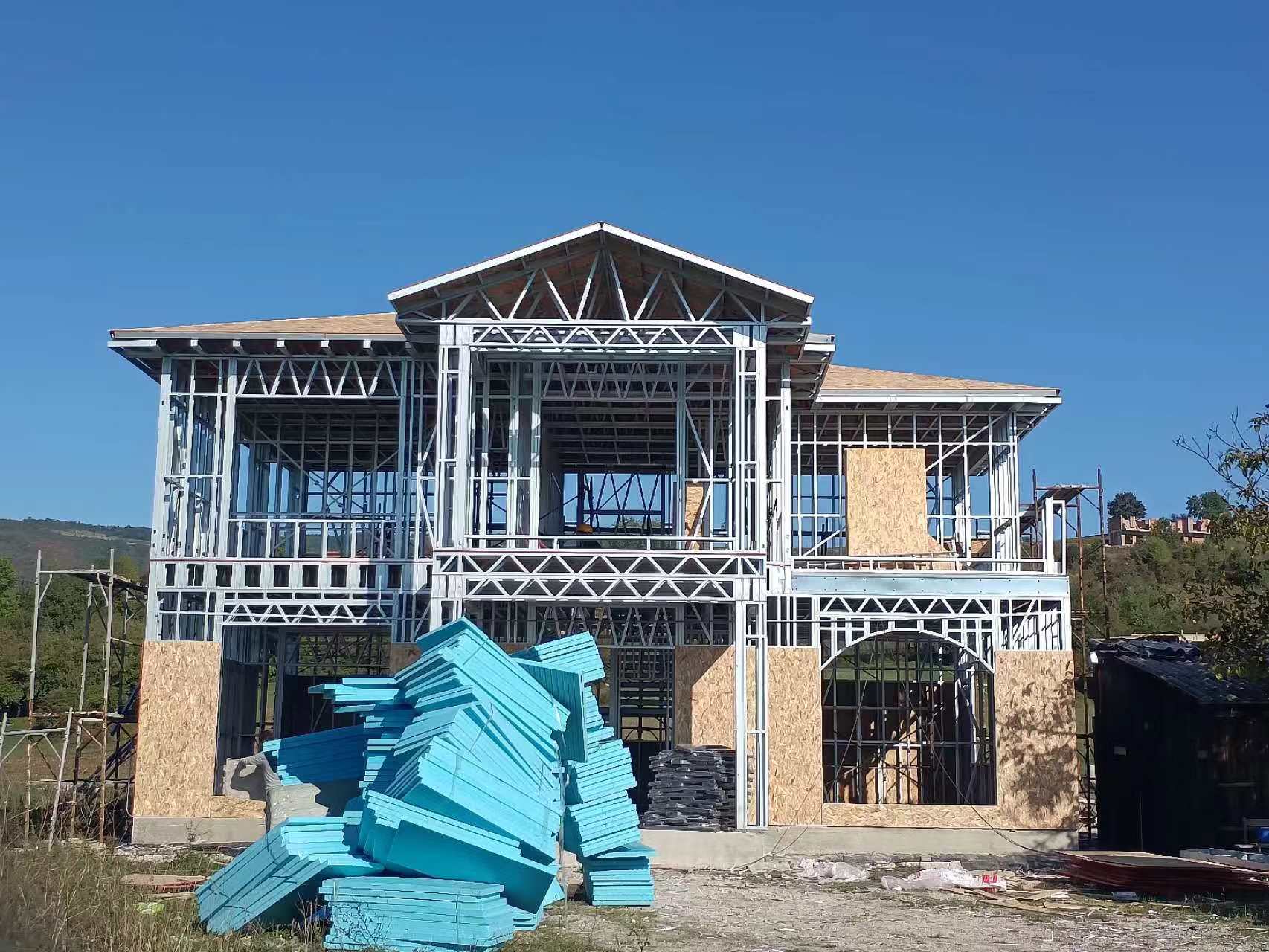The safety of steel structure villas is a critical concern for homeowners, architects, and engineers alike. While steel is widely recognized for its strength and versatility, questions about its performance in extreme conditions, longevity, and daily livability persist. This article provides a comprehensive examination of steel villa safety, addressing common misconceptions and highlighting evidence-based advantages.

1. Structural Integrity: The Foundation of Safety
Steel’s inherent properties make it a robust choice for residential construction:
A. High Strength-to-Weight Ratio
•Steel boasts a tensile strength of 400–550 MPa, far exceeding traditional materials like wood (5–20 MPa) or concrete (2–5 MPa). This enables steel villas to withstand heavy loads, including snow accumulation, multi-story designs, and rooftop installations (e.g., solar panels).
•Lightweight steel frames reduce stress on foundations, minimizing settlement risks.
B. Seismic Resilience
•Steel’s ductility allows it to bend without breaking during earthquakes. Studies show steel structures can absorb 6–8% more seismic energy than reinforced concrete.
•In earthquake-prone regions like Japan and California, steel villas often meet or exceed ASCE 7-22 seismic design standards.
C. Wind and Storm Resistance
•Pre-engineered steel components form rigid connections, enabling villas to resist winds up to 150 mph (Category 4 hurricanes).
•Aerodynamic designs and anchored foundations prevent uplift in tornado-prone areas.

2. Fire Safety: Debunking Myths
Contrary to the belief that steel “melts” in fires, modern engineering ensures robust fire protection:
A. Fire-Resistant Materials
•Structural steel is encased in gypsum board, spray-on fireproofing, or intumescent coatings, achieving fire ratings of 1–2 hours (ASTM E119).
•Non-combustible insulation (e.g., mineral wool) and cladding further inhibit flame spread.
B. Comparative Performance
•Unlike wood, steel does not fuel fires. In controlled tests, steel frames retained structural integrity longer than timber during blazes, providing critical evacuation time.
•Compliance with NFPA 101 Life Safety Code ensures fire exits, alarms, and suppression systems are integrated into designs.
3. Environmental and Health Safety
Steel villas prioritize occupant well-being through advanced material science:
A. Mold and Pest Resistance
•Steel is impervious to termites, rodents, and fungal growth, eliminating health risks associated with mold spores or pesticide use.
•Moisture-resistant SIPs (Structural Insulated Panels) prevent dampness, a common trigger for respiratory issues.
B. Toxin-Free Living
•Steel production has phased out lead-based coatings, with modern galvanization using zinc-aluminum alloys (ISO 1461).
•Low-VOC paints and adhesives improve indoor air quality, aligning with WELL Building Standard requirements.

4. Long-Term Durability and Maintenance
Steel’s longevity hinges on proactive engineering and maintenance practices:
A. Corrosion Prevention
•Hot-dip galvanizing provides 75–100 years of rust protection in moderate climates.
•In coastal areas, stainless steel fasteners and sacrificial anodes combat saltwater corrosion.
B. Fatigue Resistance
•Steel’s fatigue limit (≈200 MPa) ensures it withstands decades of cyclic stresses from wind, temperature changes, and occupancy.
•Regular inspections using ultrasonic testing or drones detect micro-cracks before they escalate.
5. Safety in Extreme Scenarios
Case studies validate steel’s reliability in crises:
•Wildfires: In 2024, steel villas in Australia survived wildfires that destroyed neighboring timber homes, thanks to non-combustible exteriors.
•Floods: Elevated steel pilings and corrosion-resistant materials prevented structural damage in Louisiana’s 2023 floods.
•Blasts: Military-grade steel villas in conflict zones utilize blast-resistant designs, absorbing shockwaves through energy-dissipating joints.

Ruijie Light Steel Villa Construction Team
6. Addressing Common Concerns
A. Lightning Risks
•Steel villas are grounded via lightning rods and conductive frameworks, safely channeling strikes away from occupants.
B. Thermal Conductivity
•Insulation advancements (e.g., vacuum-insulated panels) mitigate steel’s thermal bridging, maintaining stable indoor temperatures.
C. Acoustic Performance
•Sound-dampening layers within wall cavities reduce noise transmission to 45–50 dB, comparable to concrete homes.
Conclusion: A Paradigm of Modern Safety
Steel structure villas are not only safe but often outperform traditional buildings in resilience, health standards, and disaster preparedness. Their safety hinges on three pillars: quality materials, precision engineering, and proactive maintenance. For optimal results, collaborate with architects certified by the American Institute of Steel Construction (AISC) and prioritize third-party inspections during construction.
Final Note: Emerging technologies like AI-driven structural monitoring and self-healing coatings (e.g., 2024’s NanoSteel™) are poised to elevate steel villa safety to unprecedented levels in the coming decade.